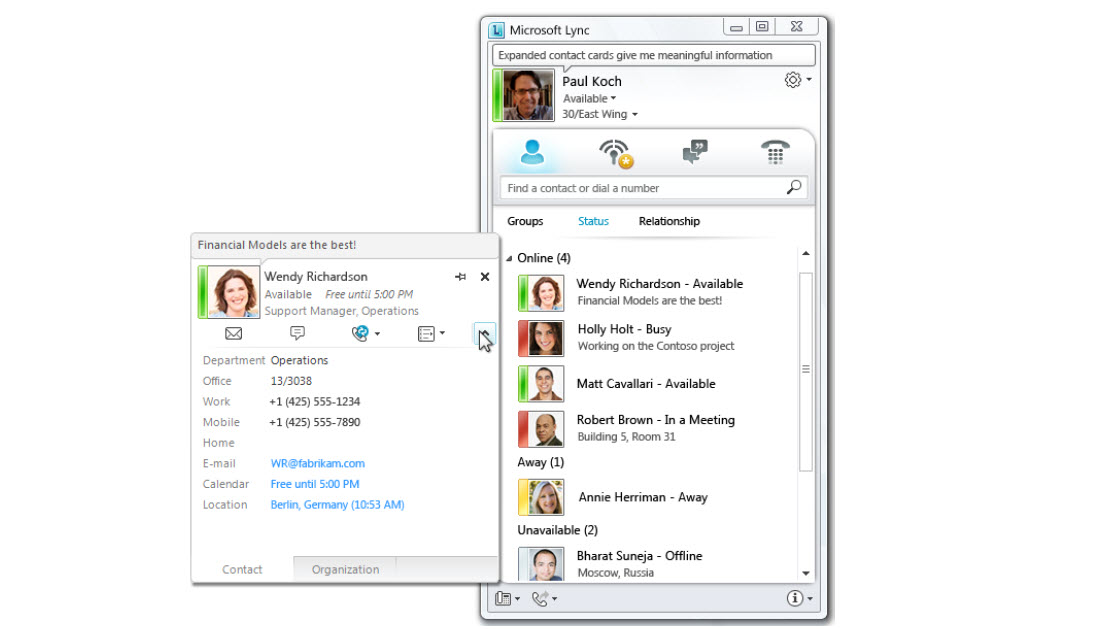Instant Messaging for business
Discover how your business can benefit from the power of instant messaging

Instant Messaging, a way of chatting to online 'buddies' in real time, really took off in the mid 1990's, spearheaded by the likes of AOL's Instant Messenger or AIM, swiftly followed by Microsoft's MSN Messenger. But Instant Messaging as a social tool began to lose consumer mindshare with the astonishing rise of social networking over the past five years and was eventually eclipsed by Twitter and Facebook.
However, there is one area where instant messaging hasn't declined: business use. Slowly but surely, Instant Messaging (IM) is now making its presence felt in the business world. No longer used for idle gossip and time-wasting, IM has been repurposed as a clever and efficient tool for keeping in touch with your business colleagues, increasing efficiency and aiding time-critical applications.
The benefits of IM
IT managers have recognised IM's potential for rapid communication and ability to create ad hoc discussions between employees and external partners. But instant messaging becomes an even more powerful collaborative tool when combined with features like document sharing, white-boarding and graphics.
IM is an attractive business tool for a number of reasons.
- · Instantaneous
- · Flexible
- · Works anywhere
- · Allows attachments
- · Multiple access options
Messages are sent in real-time and replies can be instantaneous. IM is very flexible: you can hold simultaneous chat conversations with different people or you can participate in a group conference session. Your online colleagues can be in the same building or on another continent. You can send attachments instantly too;
Unlike phone calls, IM incurs no additional costs. Unlike chat rooms, you can monitor who is allowed to contact you at any given time and people can only 'add' you if they know your exact email or IM address.
Adding security to Instant Messaging
Consumer IM software is too insecure for business use which demands something more industrial. The answer is Enterprise IM, which offers businesses more control over the use of IM and also includes essential features such as content filtering, encryption, legal compliance and message archiving. EIM can either be run as an exclusively in-house operation or as a gateway to the outside IM world.
Are you a pro? Subscribe to our newsletter
Sign up to the TechRadar Pro newsletter to get all the top news, opinion, features and guidance your business needs to succeed!
Enterprise solutions that use an internal IM server aren't always feasible, particularly for smaller businesses with limited budgets. The second option, using a public or consumer IM service provides the advantage of being inexpensive to implement and has little need for investing in new hardware or server software.
IM systems that operate solely within the business eliminate concerns about security and privacy that arise when outsourcing. They also offer a level of user interface customisation and compatibility with existing or legacy software not found with consumer IM. Their biggest drawback is their lack of contact with the outside IM world, one of the main advantages of consumer IM.
IM gateways, on the other hand, allow a company's IT staff to control and manage the use of public IM systems within the business, which lets staff use their current IM clients and their existing IM networks and contact lists. With the IM infrastructure hosted by the likes of AOL or MSN, gateways can provide many of the capabilities of EIM solutions at a fraction of their cost.
Enterprise instant messaging choices
Enterprise Instant Messaging solutions are, as you might expect, available from the big names in business computing. EIM first gained respectability from IBM in 1998 with the release of IBM Lotus Sametime. Microsoft was second out of the gate with Microsoft Exchange Instant Messaging, which eventually evolved in to Microsoft Lync, which is available to smaller businesses as part of the Office 365 subscription-based cloud offering. Other EIM offerings are available from Oracle Corporation with Oracle Beehive, a broader collaboration platform and Jabber XCP and Salesforce Chatter which combines social networking with IM.
Previously, instant messaging platforms were notoriously proprietary and made a point of not being interoperable with rival offerings. No more - both IBM Lotus and Microsoft allow 'federation' aka interoperability between their EIM systems and some of the public IM networks so that employees may use one interface to both their internal EIM system and their contacts on AOL, MSN and Yahoo.